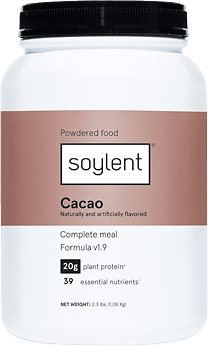Knowledge BaseYou're Questions Answered
Can you mix soy protein powder with water?
Soy protein powder is a plant-based protein supplement made from soybeans. It is a popular choice for vegetarians, vegans, and those with dietary restrictions. Mixing soy protein powder with water is a simple and effective way to prepare a protein shake. This method offers several benefits and considerations, which are outlined below.
Benefits of Mixing Soy Protein Powder with Water
1. Low-Calorie Option
Mixing soy protein powder with water results in a low-calorie shake, as water adds no additional calories. This is beneficial for individuals looking to manage their calorie intake, such as those on weight loss plans. The calories in the shake come solely from the soy protein powder, making it easier to track nutritional intake1.
2. Convenience and Accessibility
Water is easily accessible and requires no refrigeration, making it a convenient option for mixing with soy protein powder. This is especially useful for on-the-go situations, where other liquids may not be readily available. Simply adding water to a shaker bottle with the protein powder allows for quick and easy preparation.
3. Enhanced Digestion and Absorption
For those with sensitivities to lactose or other dairy components, mixing soy protein powder with water avoids potential digestive issues. Soy protein is typically well-tolerated and, when mixed with water, creates a straightforward, easily digestible shake2.
4. Neutral Base for Flavor
Water has a neutral flavor, allowing the natural taste of the soy protein powder to come through. This can be advantageous if the protein powder is flavored, as water won’t alter the intended taste. Additionally, using water as a base provides a blank canvas for adding other ingredients, such as fruits or flavor extracts, to customize the shake according to personal preferences.
Considerations
1. Texture and Consistency
Soy protein powder can vary in texture, and mixing it with water may result in a different consistency compared to using milk or other liquids. The texture may be thinner or slightly gritty, depending on the specific product. The amount of water can be adjusted to achieve the desired thickness, with some individuals preferring a thicker shake and others a more liquid consistency.
2. Nutritional Content
Mixing soy protein powder with water does not add any additional nutrients, unlike mixing with milk or other nutrient-rich liquids. This can be advantageous for those looking to limit their intake of additional nutrients or calories. However, it also means that the nutritional profile of the shake will depend solely on the soy protein powder used.
- Hoffman, J. R., & Falvo, M. J. (2004). Protein–which is best? Journal of Sports Science & Medicine, 3(3), 118-130.
- Messina, M., & Messina, V. (2010). The role of soy in vegetarian diets. Nutrients, 2(8), 855-888.
Related Questions
Protein vs Protein

Your Answer
We are a participant in the Amazon Services LLC Associates Program, an affiliate advertising program designed to provide a means for us to earn fees by linking to Amazon.com and affiliated sites.



